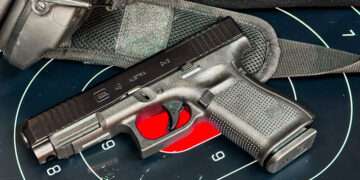Introduction
Firearms, especially repeating models, have profoundly influenced many facets of global culture. These tools of precision and power have moved beyond their practical uses into realms of symbolism and cultural narrative. Enthusiasts across regions, including those in Canada, are consistently drawn to high-quality products like those offered by Winchester Ammunition Canada. The appeal emphasizes the historical fascination and practical appreciation for firearms technology advancements. The global impact of repeating firearms provides insight into their functionality and cultural resonance. Firearms are at the intersection of invention and societal implications, blending historical importance with innovations to improve efficiency and accuracy while maintaining traditional practices. Examining their past, current impact, and future reveals why these tools remain central in discussions on culture, technology, and safety.
Understanding Repeating Firearms
Because they can fire numerous rounds without requiring humans to reload after each shot, repeating weapons are a highly sophisticated species of handgun. At their core, these firearms utilize part of the energy generated from the firing process to chamber the next round, making successive shots possible with minimal delay. This functionality offers a tactical advantage in various applications—from hunting to defense—and paves the way for advancements that continuously push the boundaries of efficiency and precision. Unlike their single-shot counterparts, repeating firearms embody a transformative shift in design, reflecting both innovation and a strategic approach to improved performance.
A Brief History of Repeating Firearms
The history of repeating firearms is rich and complex, dating back to the late 18th and early 19th centuries when inventors began experimenting with mechanisms that would allow for more rapid firing rates. The advent of revolvers and lever-action rifles marked significant milestones, transforming how battles were fought and shaping the course of military and civilian life. From the plains of the American West to European battlegrounds, these firearms symbolized a new era of combat strategy—one where the rate of fire could decisively influence outcomes. Key models, like the Winchester rifle, became emblematic of innovation in this space, forever altering the landscape of arms development.
Technological Advances in Firearms Design
Technological advancements have kept firearms at the forefront of engineering innovation. Modern-day evolutions include everything from materials science—using lighter, stronger materials for better handling and durability—to sophisticated optics for enhanced accuracy. The integration of electronics in aiming systems and the development of new ammunition types reflect an ongoing advancement in firearms technology. These improvements have improved the efficiency of firearms and increased their reliability under varying conditions, affirming their continued relevance in a technologically complex world.
Repeating Firearms in Popular Culture
In popular culture, repeating firearms are frequent stars of the show, featuring prominently in films, television, and literature. Often depicted as a symbol of power and resourcefulness, these firearms capture the imagination of audiences across the globe. Iconic scenes from Westerns, where the hero’s trusty lever-action rifle saves the day, are etched into cultural memory. Beyond entertainment, these portrayals reflect underlying societal attitudes toward strength, independence, and the sometimes controversial role that firearms play in society. They act as a mirror, reflecting our fascination and the complex relationships cultures have with these influential tools.
The Role of Firearms in Hunting and Recreation
Outside of their historical and cultural significance, repeating firearms continue to play vital roles in activities such as hunting and recreational shooting. These firearms offer improved handling and effectiveness for hunters, allowing for more ethical pursuits. In sport shooting, enthusiasts appreciate the skill required to master shooting with precision and speed. Combining durability with modern enhancements, firearms designed for sport enable competitive and recreational shooters to engage in practices emphasizing discipline, accuracy, and respect for a long-standing cultural convention.
Safety Measures and Responsible Use
With the significant power that comes with firearms ownership, responsibility is paramount. Safety awareness and training are essential elements of handgun use to minimize mishaps and abuse. Programs that promote firearm safety and education emphasize safe handling, secure storage, and adherence to legal regulations. This approach protects communities and helps maintain the positive cultural contributions of firearms by preserving their history and ensuring their responsible use in sporting and recreational contexts.
The Global Influence of Firearms
Firearms wield considerable influence on the global stage, shaping defense policies and security measures worldwide. Firearms in varying cultural contexts influence everything from legislative policies to societal perceptions. In countries with a history of weapons use, legislation balances historical legacy with modern safety concerns. Meanwhile, international security apparatuses often incorporate advanced repeating firearms technologies, underscoring the complexities of perception and regulation across borders.
The Future of Firearms Technology
Weapon innovation can grow along with technology. Introducing innovative technology, such as biometric security systems or digital optics, suggests a future where firearms become more integrated with digital systems, potentially offering even greater safety and precision. Legislative frameworks worldwide will undoubtedly influence these developments, steering the direction and availability of future technologies. As we look forward, the marriage of technology, safety, and functionality promises to bring about the next stage in the evolution of repeating firearms.

















